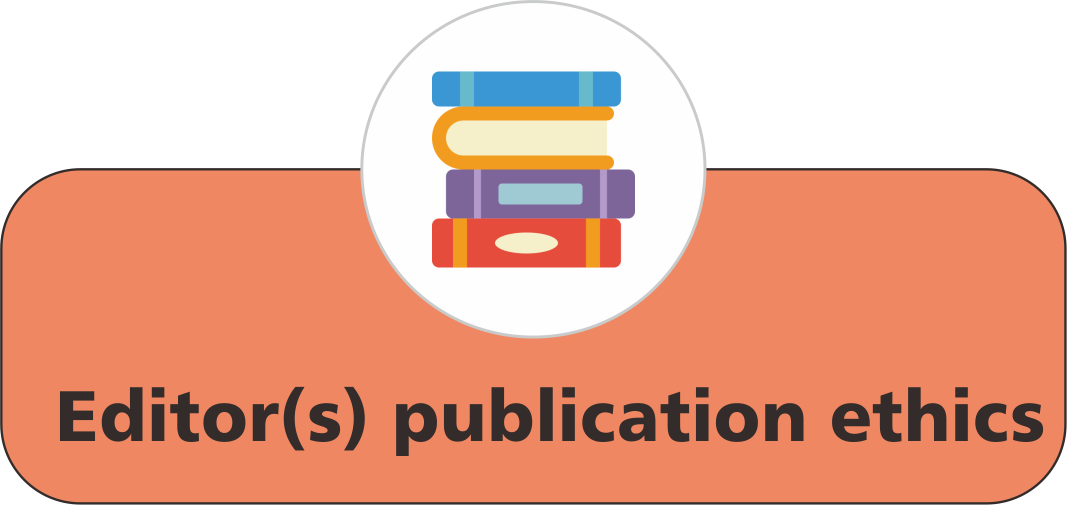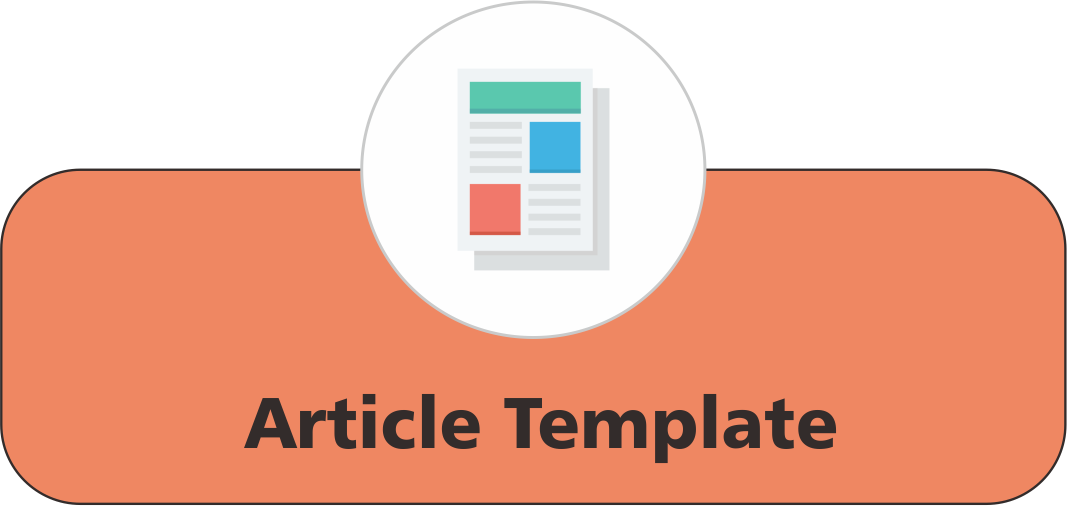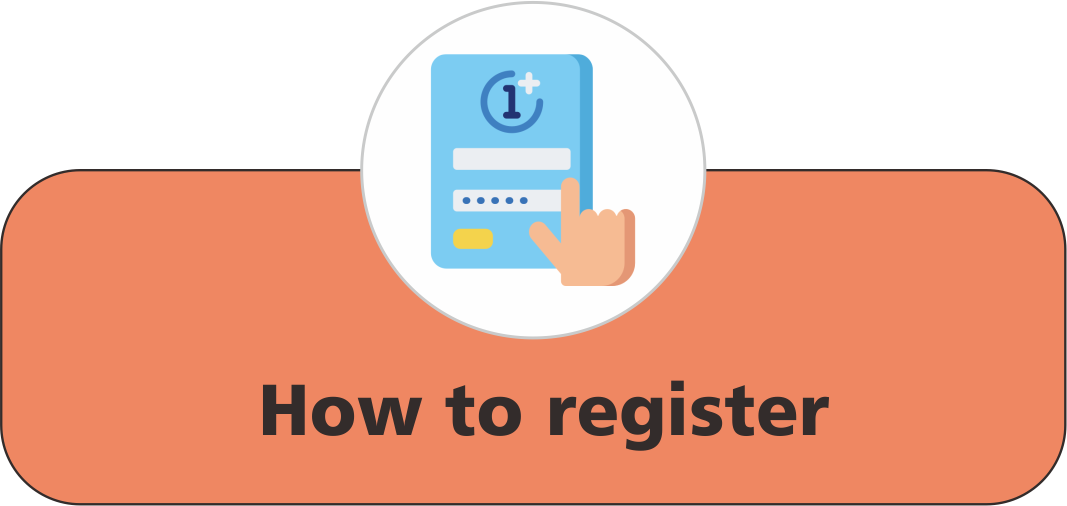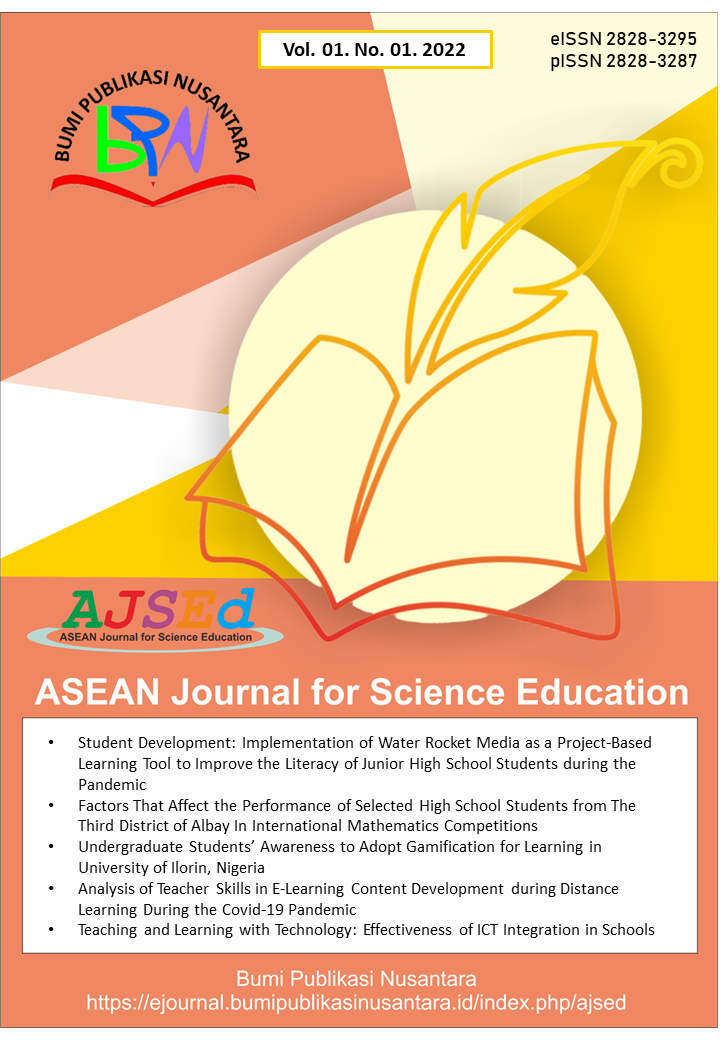Impact of Blended Learning Method on Secondary School Physics Students’ Achievement and Retention in Lokoja, Nigeria
 ),
),
(1) Prince Audu Abubakar University
 Corresponding Author
Corresponding Author
Abstract
Keywords
References
Abdulwaheed, O. I., Gana, C. S., Hassan, A. A., and Uno, E. U. (2017). Perception on the use of blended learning method among distance education students in North Central, Nigeria. Journal of Science, Technology, Mathematics and Education (JOSTMED), 13(4), 111-117.
Ekamilasari, E., and Pursitasari, I. D. (2021). Students' critical thinking skills and sustainability awareness in science learning for implementation education for sustainable development. Indonesian Journal of Multidiciplinary Research, 1(1), 121-124.
Kasmana, K., Dewi, A. C., Hermiyah, M., Asifa, V., and Maulana, H. (2021). Designing multimedia applications for nutrition education and managing stress. Indonesian Journal of Teaching in Science, 1(1), 27-38.
Krejcie, R. V., and Morgan, D. W. (1970). Determining sample size for research activities. Educational and psychological measurement, 30(3), 607-610.
Makinde, S. O., and Yusuf, M. O. (2017). The flipped classroom: Its effects on students’ performance and retention in secondary school mathematics classroom. International Journal of Innovative Technology Integration in Education, 1(1), 117-126.
Nasution, A. R., and Nandiyanto, A. B. D. (2021). Utilization of the google meet and quiziz applications in the assistance and strengthening process of online learning during the Covid-19 pandemic. Indonesian Journal of Educational Research and Technology, 1(2), 31-34.
Obielodan, O. O., Fakomogbon, M. A., Amosa, A. A., and Njoagwu, R. N. (2017). Effect of video-based instruction for teaching mathematics in primary schools in ifelodun local government area, Lagos State. KIU Journal of Humanities, 2(1), 331-337.
Soetan, A. K., Raheem, I. A. and Hakeem, I. O. (2017). Assessment of students' utilisation of mobile technology devices for learning, in Kwara State colleges of education Ilorin. 1st Conference Proceedings of the Association for Innovative Technology Integration in Education (AITIE), 2017, 351-356.
Yapici, I. U. and Akbayin, H. (2012). The effect of blended learning model on high school students’ biology achievement and on their attitudes towards the internet. Turkish Online Journal of Education Technology, 11(2), 228 – 237.
Article Metrics
Abstract View : 1587 times
: 1587 times Download : 751 times
Download : 751 times
Refbacks
- There are currently no refbacks.
Copyright (c) 2023 Bumi Publikasi Nusantara

This work is licensed under a Creative Commons Attribution-ShareAlike 4.0 International License.







